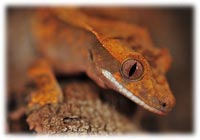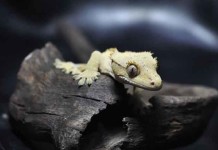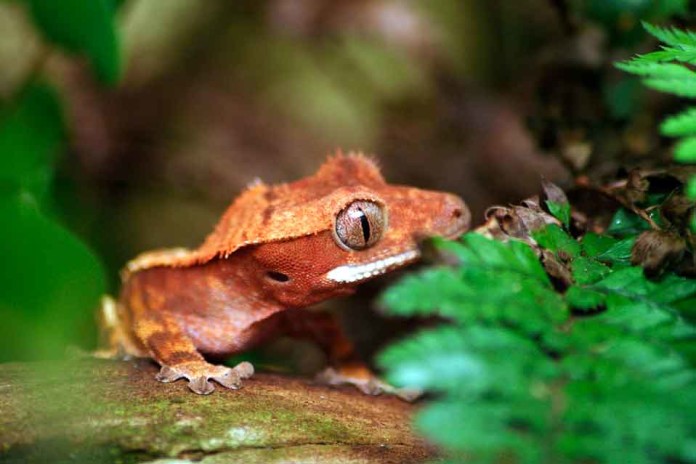Caring for the crested gecko is relatively easy if you are prepared. You should have the right location for your gecko’s habitat and be able to meet their needs. This requires proper enclosure, environment, nutritional and health needs. The crested gecko is a unique reptile that you will enjoy having as a pet as long as you take care of it properly.
Enclosure and Environment
The crested gecko requires a tall enclosure so that it can climb. The enclosure should be well-ventilated and outfitted with a suitable substrate, plants, branches and hiding places. The environment should be kept humid by misting it daily. Cleanliness of the environment is vital to the health of the crested gecko. The enclosure itself should be cleaned regularly and its contents either changed out or thoroughly wiped down.
Nutritional Needs
Most important of the crested gecko needs is meeting their nutritional requirements. If they do not receive proper nutrition, they can suffer from illness or even die. Fortunately, food is one of the easiest care factors for the crested gecko.
 With the introduction of the T-Rex Crested Gecko Diet CGD), it is now easier than ever to properly feed your crested gecko. The CGD is a fully balanced meal replacement powder that you simply mix with water to form a paste.
With the introduction of the T-Rex Crested Gecko Diet CGD), it is now easier than ever to properly feed your crested gecko. The CGD is a fully balanced meal replacement powder that you simply mix with water to form a paste.
To supplement the CGD, the crested gecko can be fed live crickets. They enjoy hunting and feeding them crickets lets them exercise their hunting skills. In addition to the crickets, you can feed them mashed or pureed fresh fruit, which they love. As a treat, you can feed them fruit baby food, but limit it due to the high sugar and preservative content.
Health Requirements
You should always provide your crested gecko with a supplemental vitamin/mineral powder if you are feeding them a varied diet other than the CGD. Mixing the powder with their fruit and dusting the live crickets will give them sufficient supplemental nutrition. You should always ensure that your crested gecko is receiving plenty of calcium and vitamin D3.
A complete shed is important for the crested gecko. To ensure that it is getting enough hydration, daily misting of the habitat is required. Keep the humidity at a proper level as well, which will aid in the gecko’s shedding.
An incomplete shed is generally spotted around the crested gecko’s toes and tail tip. If left unshed, the skin will dry up and restrict blood flow to those areas. This will result in the toes and/or tail tip dying and falling off. Proper hydration and care should be taken to ensure that this does not happen.
Caring for the crested gecko is easy but it requires dedication and thought. Being in captivity, they rely on you to provide them with the proper environment, sufficient food and proper nutrition. It is up to you to ensure their optimum health.











